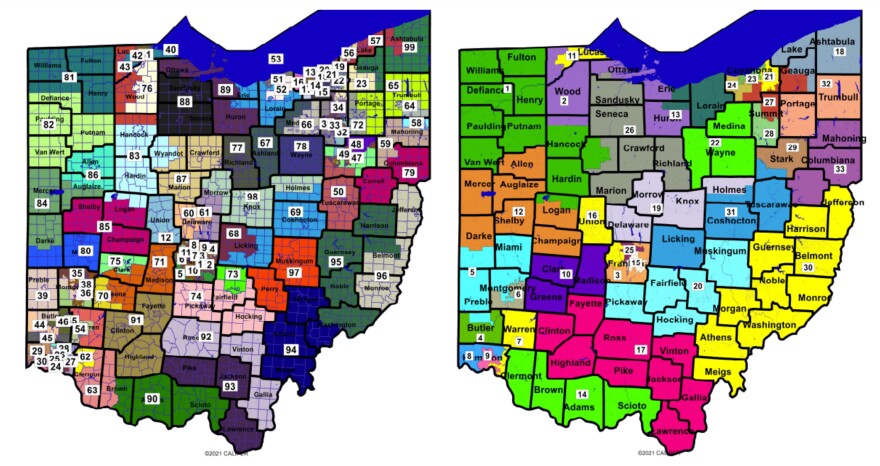The plaintiffs in the original supreme court case against the state legislative maps filed their objections to the new set of House and Senate maps approved by the .
Those new maps were adopted after the first set of maps were invalidated by the Ohio Supreme Court earlier this month.
The latest plan creates an Ohio House map that splits 57 Republican districts and 42 Democratic districts and an Ohio Senate map with 20 Republican districts and 13 Democratic districts.
That partisan breakdown still falls short of reflecting Ohio's voter preference by party, which over the course of statewide races in the past 10 years averages out to 54% Republican and 45% Democratic.
Jen Miller, executive director for the League of Women Voters of Ohio, said despite that group's win against the previous maps in the Ohio Supreme Court, the new maps are still "rigged" to serve the interests of Republican candidates.
"We have to continue to fight and we will continue to fight until the people of Ohio, one way or the other, finally see maps that are not gerrymandered for political parties," Miller said.
Donald J. McTigue, counsel for one of the relators in the case, writes in their objection, "The Commission’s task is clear: It must comply with Article XI in its entirety. It has now failed to do so twice. The Commission’s refusal to follow this Court’s order and comply with the Ohio Constitution reflects a stubborn intransigence toward complying with Article XI, and a troubling willingness to flout those mandates whenever political expediency might dictate."
House Speaker Bob Cupp (R-Lima), co-chair of the Ohio Redistricting Commission, said they .
The maps passed the Ohio Redistricting Commission by a party-line vote of 5-2.
Cupp and the other Republican commission members said their plan was the only one that came close to reaching that proportionality requirement without violating other constitutional provisions.
Copyright 2022 The Statehouse News Bureau. To see more, visit .




